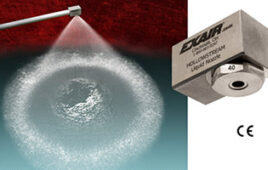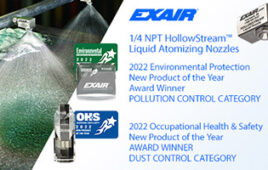
For gearboxes operating at a given temperature range or operating condition, OEMs use several standards to define the required gear oil type and performance characteristics.
Often, specifying the proper gear oil for an end user is as simple as following an OEM recommendation. This should always be the first step in identifying the proper gear oil to use. But OEMs use several standards to define the desired performance characteristics and the type of oil for a given application, temperature range or operating condition. So how does the engineer make sure a specification is correct? They start with knowing the common industrial gear oil standards.
ISO VG
Viscosity of a gear oil is one of the most important physical characteristics to be considered. With so many different international standards defining viscosity requirements, the International Standards Organization Viscosity Grade (ISO VG) was developed with input from all international organizations. This ISO system isused to minimize confusion between equipment manufacturers, end users and lubricant suppliers by standardizing the different viscosity grades of an oil. The ISO VG is defined as the base oil’s viscosity expressed in the unit centistoke (cSt), which is also equal to mm²/s at a standard temperature of 40°C. There is an allowable tolerance of ± 10% of that standard viscosity grade. For example, the viscosity of an ISO VG 460 oil is acceptable at a minimum of 414cSt at 40°C and a maximum of 506cSt at 40°C. ISO viscosity grades can vary from an ISO VG 2 up to ISO VG 3200 and are defined in standard steps in between.
AGMA Specification
The latest version of the American Gear Manufacturers Association (AGMA) specification for the lubrication of enclosed gear drives is ANSI/AGMA 9005-F16. This document provides both end-users and equipment manufacturers lubrication guidelines for open and enclosed gearing. The standard defines several recommended test requirements for various viscosity grades and various oil types. Previous versions of the document used designations for the different viscosity grades (4EP, 5EP, etc.). The current version of the document has standardized on ISO viscosity grades and oil types (i.e. Antiwear/Antiscuff EP, etc.). There are still gearboxes in industry that will specify the use of a 5EP oil. If this is the case, check with a lubricant manufacturer or old versions of the AGMA document to cross to a current viscosity grade and type. In the past, anti-scuff lubricants were referred to as extreme pressure or EP.
The latest release of this standard has transitioned away from the generic term of EP and is now referring to these oils as anti-scuff or AS. The FE8 bearing test has now been added as a requirement to the anti-scuff lubricant table. There has also been an added section on enhanced lubricant characteristics to discuss the importance of temperature performance, enhanced wear protection, foam behavior and efficiency.
CLP Gear Oils
The CLP rating is a German oil standard, similar to AGMA specifications, and is defined by DIN 51517-3. This document outlines the minimum physical test requirements to meet the CLP specification. It covers petroleum-based gear lubricants that contain additives to improve rust protection, oxidation resistance and EP protection. Often, a gear manufacturer will specify a CLP oil and an oil type; for example, CLP HC 220, is an ISO VG 220 PAO gear oil that meets CLP specifications.
• CLP is typically a CLP mineral oil
• CLP HC is typically a CLP synthetic (SHC, PAO, POE) oil
• CLP PG is typically a CLP polyglycol PAG oil
API Specification
The API specification is written by the Lubricants Group of the American Petroleum Institute and is developed to assist automotive manufacturers and end users in the proper selection of transmissions, transaxles and axle lubricants. The test requirements are defined by ASTM D7560 and ASTM D7450. While the API designation is primarily focused on automotive products, there still are a few OEMs that will use this for industrial applications. Currently there are only three API designations that are used. These are API GL-4, API GL-5, and API GL MT-1.
• API GL-4: Intended for use in applications with spiral bevel
gear sets that operate under moderate to severe conditions.
• API GL-5: Intended to be used in hypoid gears that are
operating under high speeds and shock loading, or under low speed and high-torque conditions. This is defined in ASTM D7450.
• API MT-1: Denotes lubricants that are intended for use in
non-synchronized manual transmissions. They are specifically designed to perform under the operating conditions and on the components in a manual transmission. This is specifically true for the compatibility of sealing materials.
API GL-1, API GL-2, API GL-3, & API GL-6: These four designations are all not currently in use due to the ever-changing application and test requirements. They may still be listed by a manufacturer or OEM, but in the situation, they are the API Designation document should be checked to provide a current and accurate lubricant recommendation.
Kluber
www.klueber.com
Filed Under: Gears • gearheads • speed reducers, Lubricants • oils • industrial grease



